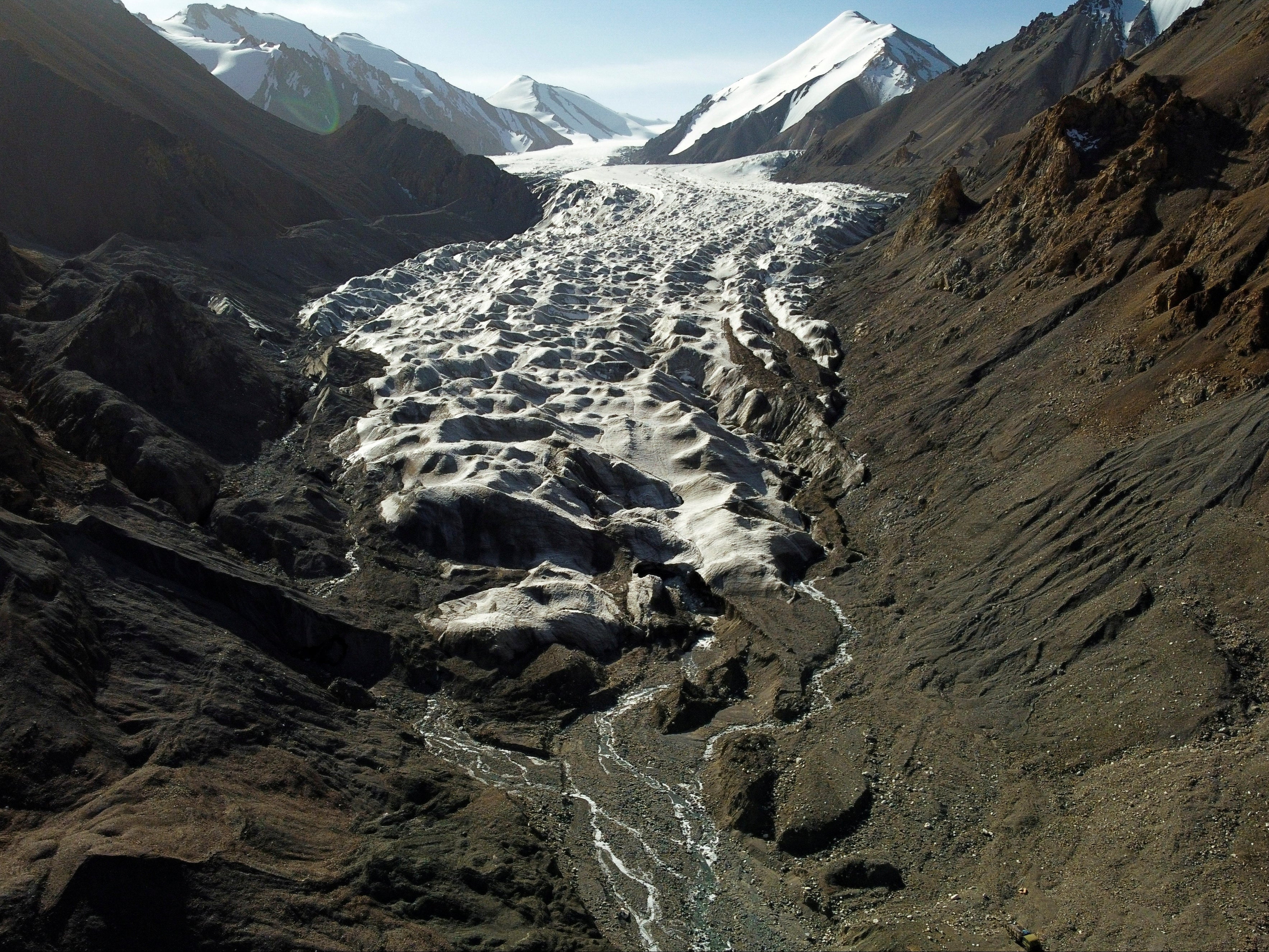
Scientists in China have found using blankets to protect vulnerable glaciers from melting amid rising temperatures can help retain significant quantities of ice.
The Chinese Academy of Sciences conducted an experiment on a 500-square-metre section of the Dagu Glacier in northwest Sichuan Province in August 2019, in which they covered the area with geotextile blankets, a type of environmentally-friendly fabric.
After two and a half months, they found the area insulated by the blankets had ice up to one metre thicker than areas without blankets.
The experiment “demonstrates the blankets’ capacity to block solar radiation and heat exchange on the surface of the glacier”, said scientist Wang Feiteng, according to Shanghai Daily.
As the melting of glaciers around the world has gained pace due to the global climate crisis, smaller glaciers with an area smaller than 1 square kilometre are at particular risk, and “might soon disappear without human intervention”, Mr Wang said.
But despite the threat, the majority of research continues to focus on the mechanisms contributing to melting, rather than finding solutions to glacial melting, he said.
He told the newspaper the study team will pilot the heat-blocking method on other glaciers in China which have already been severely affected by climate change and those with rich tourism resources.
The experiment was apparently inspired by pre-refrigerator summers, when icecream would be stored beneath quilted blankets.
The geotextile material used in the experiment is designed to block heat and reflect light in order to protect the ice underneath.
The study follows research published in November which revealed that glaciers in China’s remote Qilian Mountains are melting at a “shocking” pace due to the climate crisis, and could ultimately result in crippling water shortages for the region.
Rising temperatures have meant glaciers are now in retreat, and the process is getting faster.
The largest glacier in the mountains, on the arid northeastern edge of the Tibetan plateau, has retreated about 450 metres since the 1950s, when researchers set up China’s first monitoring station to study it.
Since monitoring began in the 50s, average temperatures in the area have risen about 1.5C, and with no sign of an end to warming, the outlook is grim for the 2,684 glaciers in the Qilian range.







